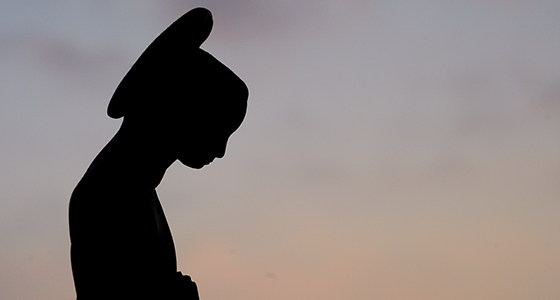Mary's Rapture

Some are surprised that the doctrine of Mary’s bodily assumption was not defined until 1950, using little biblical support. The pope decreed that all Catholics must hold and believe as divinely revealed “that the immaculate Mother of God, the Ever-Virgin Mary, having completed the course of her earthly life, was assumed body and soul into heavenly glory” (Munificentissimus Deus44).
Yet this doctrine was no twentieth-century innovation, as Tim Perry explains:
When seeking to understand the bodily assumption of Mary into heaven with any degree of sympathy two factors need to be kept constantly in mind. The first is the doctrine’s ancient roots.
The ancient Church found that it fit Scripture and that it was consistent with other Christian beliefs. By the fourth century, Christians celebrated the feast of Mary’s dormition, especially in Jerusalem. The dormition refers to Mary “falling asleep” before being assumed (taken up bodily) into heaven to be with our Lord. Finding no evidence of Mary’s death, Epiphanius (d. 403) suggests that this Marian teaching was true, as “nothing is impossible for God.” Several Church Fathers preached about it, such as Germain (d. 733), Andrew of Crete (d. 740), and John Damascene (d. 749). Gregory (d. 594), bishop of Tours, recorded part of a Latin translation of a lost fifth-century Greek book describing Mary’s assumption. John of Thessalonica (d. 630) detailed the popular belief regarding Mary’s dormition and assumption. Although some details may have been embellished over time, his exposition shows that some truth likely lies behind this commonly held belief.
As a type for Mary, the Ark of the Covenant may also describe her assumption. Psalm 132 prophesies Christ’s ascension into heaven:“Arise, O Lord, and go to thy resting place[Christ’s ascension]thou and the ark of thy might[Mary].”
Why would God want the Ark of the Covenant in his resting place with him, unless it prefigured something or someone extremely dear to him, such as his own mother? This seems to fit with our Lord’s promise:
Scripture prefigures this when David brings the Ark of the Covenant into Jerusalem (2 Sam. 6:15). David represents our Lord; the ark, Mary; Jerusalem, God’s heavenly city. David’s joy in bringing the Ark of the Covenant into the earthly Jerusalem prefigures Christ’s joy in bringing Mary’s body into the heavenly Jerusalem. We don’t want to receive Michal’s curse by failing to rejoice with Christ as he welcomes his blessed mother into the heavenly Jerusalem (2 Sam. 6:16,23)!
Finally, Mary’s assumption is also prefigured when Jeremiah hides the ark in a cave on the mountain where Moses had been assumed into heaven. Scripture says this ark is never to be found (2 Macc. 2:1-8). Likewise, Mary’s body was hidden in a cave, never more to be found on earth because it was taken up. As John Damascene would say,“today the sacred and living ark of the living God, who conceived her Creator himself, takes up her abode in the temple of God, not made by hands.”
Revelation 12 also shows the Ark of the New Covenant (Rev. 11:19) in heaven as a woman, clothed with the sun’s glory, crowned with twelve stars, and with the moon under her feet (vv. 1-5). The woman—God’s New Covenant Ark, the mother of the Messiah—is alive, raptured into heaven.
We hope you enjoyed this excerpt from Fr. John Waiss's brand-new book Bible Mary: The Mother of Jesus in the Word of God
Recent Posts
-
Are We Superior to the Early Christians?
If the early Church was the Catholic Church, why can’t we say that Christians just lost their way ea …Jul 15th 2024 -
Did the Early Christians Get Things Wrong?
You can find countless variations of the claim that early Christians believed Protestant things: …Jul 1st 2024 -
How to Respond When the World Tells Us We Can "Build Our Own Deity"
The necessity of revelation and of knowing God on his terms is not accepted in our culture today. A …Jun 22nd 2024









